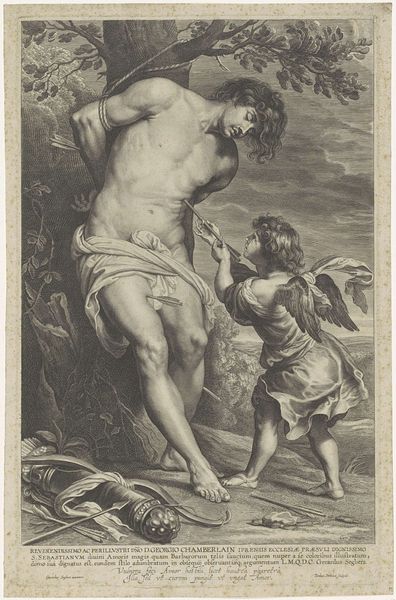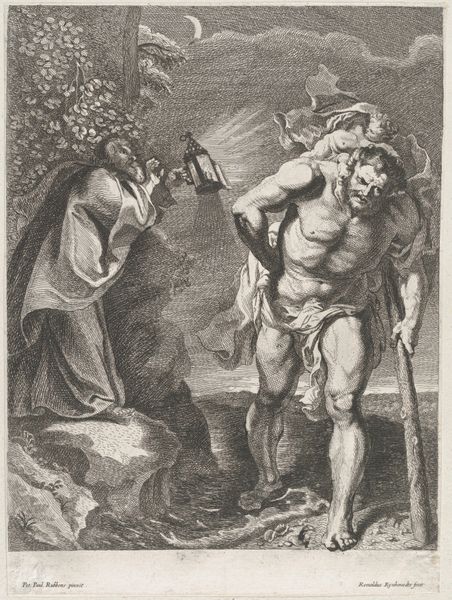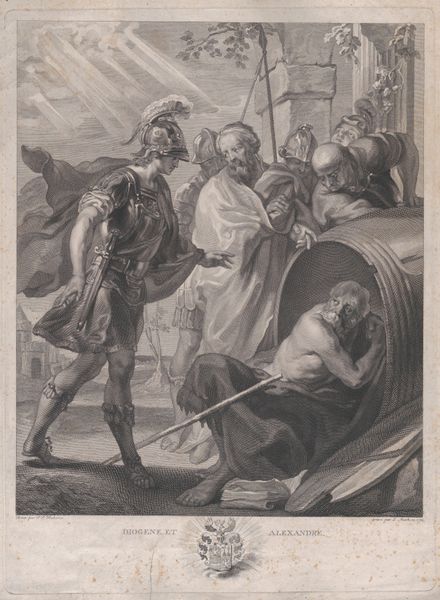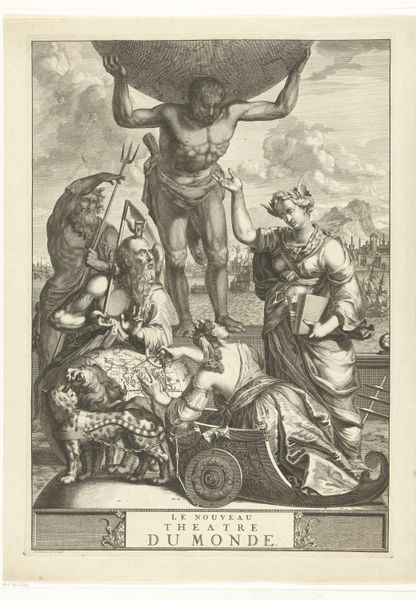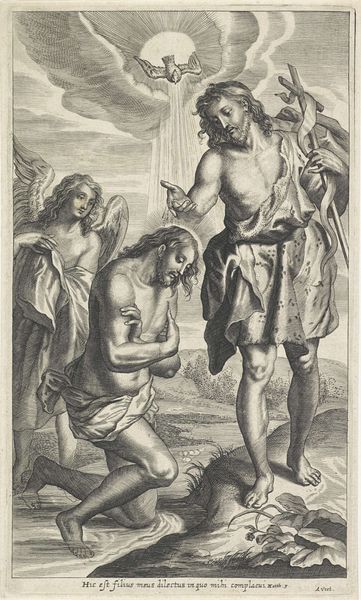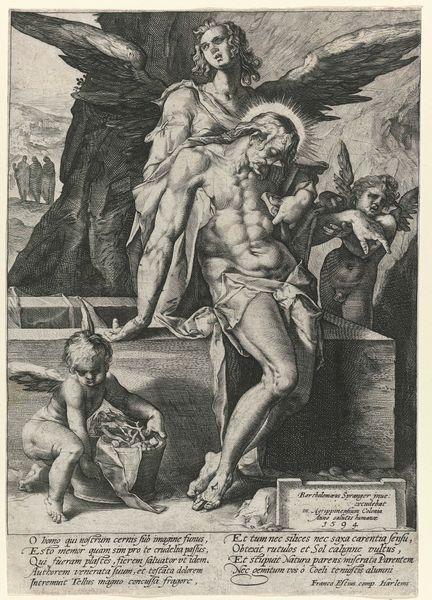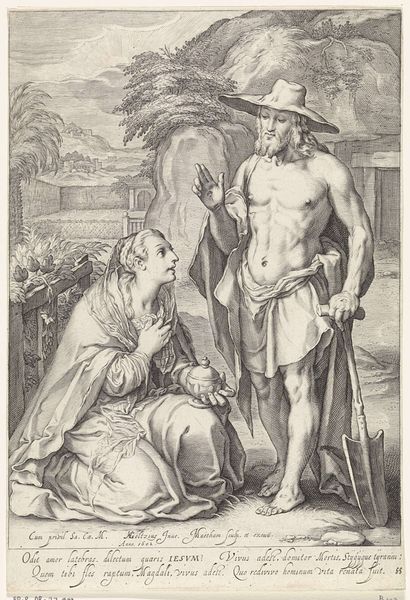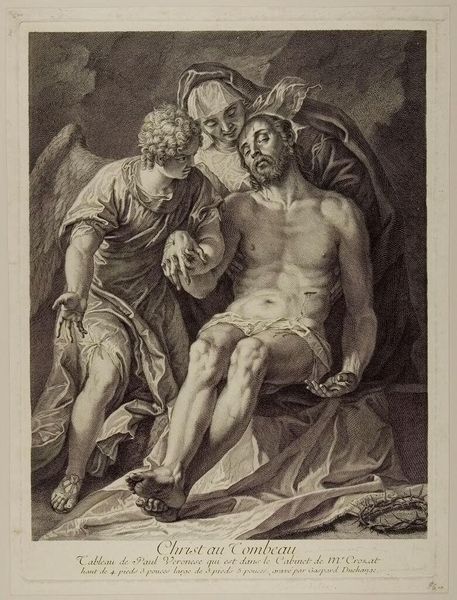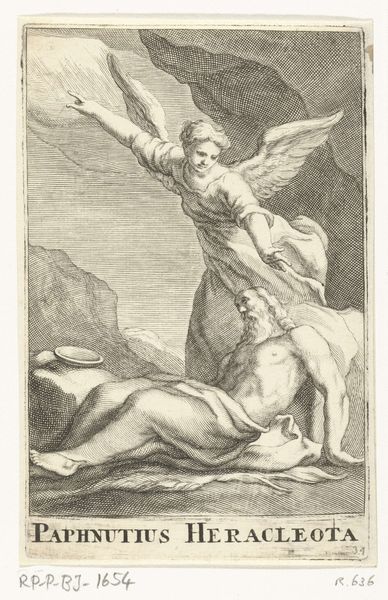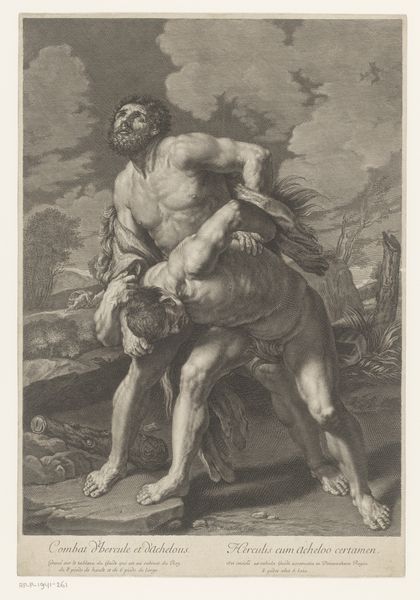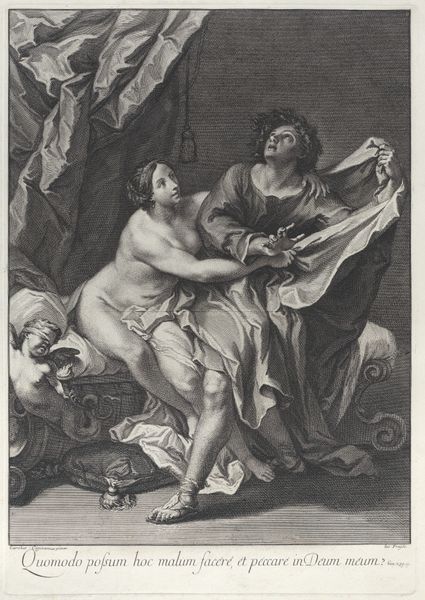
print, etching
#
narrative-art
#
baroque
# print
#
etching
#
charcoal drawing
#
figuration
#
history-painting
Dimensions: height 422 mm, width 317 mm
Copyright: Rijks Museum: Open Domain
Editor: This is "Christus verschijnt aan Maria Magdalena," or "Christ Appearing to Mary Magdalene," an etching by Carel de Moor II, dating sometime between 1666 and 1738. The contrast between the figures and the heavy lines really pulls me in. How do you interpret this work? Curator: It’s a fascinating depiction of a pivotal biblical scene, laden with symbolic meaning that would have resonated deeply with viewers of the time. What catches my eye immediately is the interplay between light and shadow, a hallmark of the Baroque style. The stark contrast illuminates Christ, drawing our focus to him, while Mary Magdalene emerges from a darker, more ambiguous space. Editor: So the lighting isn’t just for drama; it's highlighting something deeper? Curator: Precisely. Light, in this context, often represents divine revelation and grace. Christ's radiance signifies his resurrection and spiritual power, while the shadows surrounding Mary might symbolize her previous state of sin or ignorance. Notice too Christ's hand gesture—it's not simply a greeting, but a symbol. Editor: It’s raised slightly, like a blessing, but his palm is turned inward… What could that mean? Curator: Some art historians see a subtle distancing, emphasizing the difference between his divine nature and her earthly one, at least until her full acceptance of the resurrection. It suggests that their relationship has been irrevocably changed by the event. Think also of the setting, combining architectural elements with natural scenery, blending earthly and heavenly realms. Editor: So many layers of meaning! It makes you see more than just a single moment. Curator: Indeed. The image uses familiar visual codes to transmit spiritual and cultural ideas about faith, redemption, and the changing relationship between humanity and divinity in the post-Reformation world. Editor: I’m definitely seeing this print in a whole new light – no pun intended! Curator: And that, perhaps, is the most powerful effect of any artwork. It allows us to continually discover, and rediscover, echoes of the past in the present.
Comments
No comments
Be the first to comment and join the conversation on the ultimate creative platform.


